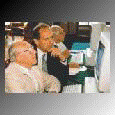Saturday, September 26, 2009
IAF Singapore - Facilitation Workshops (Oct09-Nov09)
Two upcoming facilitation workshops to help you in your professional and personal development learning journey. It's a good opportunity for you to pick up useful and applicable facilitation skills and techniques.
Upcoming Facilitati
Wednesday, September 23, 2009
Leadership Business Motivational Speakers Leading Turbulent Times
The Inspired Leader Slide Cast
Servant Leadership
The Gen Y Guide to Web 2.0 at Work
Tuesday, September 22, 2009
The 2009 Brandon Hall Excellence in Learning Awards
 | ||||||||||
| ||||||||||
Sunday, September 13, 2009
Mgmt Dev The Ama Way
The Toyota Way
Learning from the Toyota way
Best Practice in T&D: Workforce Magazine
| | | ||||||||||||||||||||||||||||||||||||||||||||||||||||||||||||||||||||||||||||||||||||||
| |||||||||||||||||||||||||||||||||||||||||||||||||||||||||||||||||||||||||||||||||||||||
12 Questions to Measure Employee Engagement
12 Questions to Measure Employee Engagement
Do your opinions seem to count? Does the mission/purpose of your company make you feel your job is important? Have you had opportunities at work to learn and grow?
Comments 2 | Recommend 282
After hundreds of focus groups and thousands of interviews with employees in a variety of industries, Gallup came up with the Q12, a 12-question survey that identifies strong feelings of employee engagement. Results from the survey show a strong correlation between high scores and superior job performance. Here are those 12 questions:
- Do you know what is expected of you at work?
- Do you have the materials and equipment you need to do your work right?
- At work, do you have the opportunity to do what you do best every day?
- In the last seven days, have you received recognition or praise for doing good work?
- Does your supervisor, or someone at work, seem to care about you as a person?
- Is there someone at work who encourages your development?
- At work, do your opinions seem to count?
- Does the mission/purpose of your company make you feel your job is important?
- Are your associates (fellow employees) committed to doing quality work?
- Do you have a best friend at work?
- In the last six months, has someone at work talked to you about your progress?
- In the last year, have you had opportunities at work to learn and grow?
Source: http://www.workforce.com/section/09/article/23/53/40.html
Saturday, September 12, 2009
Positive organizational behavior

Positive organizational behavior
From Wikipedia, the free encyclopedia
Positive Organizational Behavior (POB) is defined as "the study and application of positively oriented human resource strengths and psychological capacities that can be measured, developed, and effectively managed for performance improvement in today’s workplace" (Luthans, 2002a, p. 59).[1]
For a positive psychological capacity to qualify for inclusion in POB, it must be positive and must have extensive theory and research foundations and valid measures. In addition, it must be state like, which would make it open to development and manageable for performance improvement. Finally, positive states that meet the POB definitional criteria are primarily researched, measured, developed, and managed at the individual, micro level.[2]
The state-like criterion distinguishes POB from other positive approaches that focus on positive traits, whereas its emphasis on micro, individual-level constructs separates it from positive perspectives that address positive organizations and their related macro-level variables and measures. Meeting the inclusion criteria for POB are the state-like psychological resource capacities of self-efficacy, hope, optimism, and resiliency and, when combined, the underlying higher-order, core construct of Positive psychological capital or PsyCap. [3]
Contents[hide] |
[edit] General overview
POB is the application of Positive psychology to the workplace. Its focus is on strengths and on building the best in the workplace under the basic assumption is that goodness and excellence can be analyzed and achieved.
[edit] Origins of POB: The Positive Psychology Movement
Although POB research is relatively new, its core ideas are based on ideas of earlier scholars.
POB origins developed from the Positive Psychology movement, initiated in 1998 by Martin Seligman and colleagues. Positive Psychology aims to shift the focus in psychology from dysfunctional mental illness to mental health, calling for an increased focus on the building of human strength.
The levels of analysis of positive psychology have been summarized to be at the subjective level (i.e., positive subjective experience such as well being and contentment with the past, flow and happiness in the present, and hope and optimism into the future); the micro, individual level (i.e., positive traits such as the capacity for love, courage, aesthetic sensibility, perseverance, forgiveness, spirituality, high talent, and wisdom); and the macro group and institutional level (i.e., positive civic virtues and the institutions that move individuals toward better citizenship such as responsibility, altruism, civility, moderation, tolerance, and a strong work ethic). [4]
[edit] Development of POB
By integrating positive psychology to organizational setting, Fred Luthans has pioneered the positive organizational behavior research in 1999. Since then, Luthans and colleagues have been attempting to find ways of designing work settings that emphasize people's strengths, where they can be both their best selves and at their best with each other.
Despite initial studies and conceptualizations, the field of POB is still in its infancy. Further research regarding the precise antecedents, processes, and consequences of positive psychological behavior is needed. The challenge currently awaiting POB is to bring about a more profound understanding the real impact of positive states for organizational functioning and how these states can be enhanced within the work place.
[edit] See also
[edit] References
- ^ Luthans, F. (2002a). Positive organizational behavior: Developing and managing psychological strengths. Academy of Management Executive, 16(1): 57-72.
- ^ Luthans, F. (2002b). The need for and meaning of positive organizational behavior. Journal of Organizational Behavior, 23: 695-706.
- ^ Luthans, F., & Youssef, C. M. in 2007a. Emerging positive organizational behavior. Journal of Management, 33:321-349.
- ^ Seligman, MD., & Csikszentmihalyi, M. (2000). Positive psychology. American Psychologist, 55, 5–14.
[edit] External links
Fred Luthans, profile in University of Nebraska-Lincoln
Source: http://en.wikipedia.org/wiki/Positive_organizational_behavior
Performance Coaching
Performance Coaching
| Contents Lacks the Knowledge, Skills, or Abilities to Perform Process or Environmental Problems Performance Feedback Verses Criticism | Achieving excellence through performance is accomplished in two major ways. The first way is taking a proactive stance by unearthing or preventing counter-productive methods. For example, you might implement diversity and sexual harassment training programs before they become a problem within the organization. The second way is to correct performance problems that arise within the organization. This is accomplished by first, identifying the root cause and secondly, implementing a plan of action to correct the problem. Although people are our most important asset, it sometimes seems as if they are our biggest headache. There are four major causes of performance problems:
10 ----------------------------------
Lacks the Skills, Knowledge, or Abilities to PerformThis problem generally arises when then is a new hire, new or revised process, change in standards, new equipment, new policies, promotion or transfer, or a new product. In this case, there is only one solution - training. The training may be formal classes, on-the-job, self-study, coaching, etc. To determine if training is needed, we only need to ask one question, "Does the employee know how to perform the task?" If the answer is yes, then training is not needed. If the answer is no, then training is required. However, this page will focus on coaching skills.Coaching SkillsSome people tend to use the terms coaching, mentoring, and training interchangeably. However, there are differences. Mentoring is often thought of as the transfer of wisdom from a wise and trusted teacher. He or she helps to guide a personís career, normally in the upper reaches of the organization. However, this perception is starting to change as organizations are now implementing mentoring at all levels of the company's structure.
Training is about teaching or instructing a particular skill or knowledge and is normally givin in a formal environment. Coaching, on the other hand, is about increasing an individual's knowledge and thought processes with a particular task or process. It creates a supportive environment that develops critical thinking skills, ideas, and behaviors about a subject. Although it is closely tied to training, it is more personal and intimate in nature. The main difference between a coaching and a training is that the former is normally done in real time. That is, it is performed on the job. The coach uses real tasks and problems to help the learner increase his or her performance. While with training, learning is performed within the classroom. Mentoring is more career developing in nature, while training and coaching are more task or process orientated. Also, mentoring relies on the mentor's specific knowledge and wisdom, while coaching and training relies on facilitation and developmental skills. Although there are these differences, you could say that the three are synergistic and complementary, rather than mutually exclusive as most people would agree that a good coach trains and mentors, a good trainer coaches and mentors, and a good mentor trains and coaches. A performance coach is also a:
Process or Environmental Problems (Not Related to Employees)Many performance problems are due to bad process, that is, the process does not support the desired behavior. It has often been said that people account for 20% of all problems while bad processes account for the rest. See the Continuous Process Improvement Page for tracking down inefficient processes.ResourcesJust because the problem is caused by a lack of resources or technology, does not mean expenditures are needed. Remember, the solution does not always have to be the same as the cause. In this case you might be able to get your team to brainstorm new processes or procedures that will eliminate the need for new resources.Motivation Often the employee knows how to perform the desired behavior correctly, the process is good, and all resources are available, but for one reason or another, chooses not to do so. It now becomes a motivational issue. Motivation is the combination of a person's desire and energy directed at achieving a goal. It is the cause of action. Motivation can be intrinsic - satisfaction, feelings of achievement; or extrinsic - rewards, punishment, or goal obtainment. Not all people are motivated by the same thing, and over time their motivation may change. Although most jobs have problems that are inherent to the position, it is the problems that are inherent to the person that cause us to loose focus from our main task of getting results. These motivational problems could arrive from family pressures, personality conflicts, a lack of understanding how the behavior affects other people or process. When something breaks the psychological contract between the employee and the organization, the leader must find out what the exact problem is by looking beyond the symptoms, find a solution, focus on the problem, and implement a plan of action. One of the worst situations that a leader can get into is to get all the facts wrong. Start by collecting and documenting what the employee is not doing or should be doing - tasks, special projects, reports, etc. Try to observe the employee performing the task. Also, do not make it a witch hunt, observe and record what the employee is not doing to standards. Check past performance appraisals, previous managers, or other leaders the employee might have worked with. Try to find out if it a pattern or something new. Once you know the problem, then work with the employee to solve it. Most employees want to do a good job. It is in your best interest to work with the employee as long as the business needs are met and it is within the bonds of the organization to do so. Causes of problemsExpectations or requirements have not been adequately communicated.This motivational issue is not the fault of the employee. By providing feedback and ensuring the feedback is consistent, you provide the means for employees to motivate themselves to the desired behavior. For example, inconsistent feedback would be for management to say it wants good safety practices, and then frowns on workers who slow down by complying with regulations. Or expressing that careful workmanship is needed, but reinforces only volume of production.Feedback must be provided on a continuous basis. If you only provide it during an employee's performance rating period, then you are NOT doing your job. Also, ensure that there is not a difference in priorities. Employees with several tasks and projects on their plates must be clearly communicated as to what comes first when pressed for time. With the ever increasing notion to do more with less, we must understand that not everything can get done at once. Employees often choose the task that they enjoy the most, rather than the task they dislike the most. And all too often that disliked task is what needs to get performed first. Lack of motivation.A lack of motivation could be caused by a number of problems, to include personal, family, financial, etc. Help employees to recognize and understand the negative consequences of their behavior. For counseling techniques see Leadership and Motivation and Confrontation Counseling. For some training exercises see Performance Counseling Activity.Shift in focusToday, it's a lucky employee (or unlucky if that employee thrives on change) that does not have her job restructured. Changing forces in the market forces changes in organizations. When this happens, ensure that every employee knows:
Performance Feedback Verses CriticismIn general, there are two different forms of information about performance -- feedback and criticism. Feedback was originally an engineering term that refers to information (outcome) that is fed back into a process to indicate whether that process is operating within designated parameters. For example, the sensor in a car's radiator provides feedback about the engine temperature. If the temperature rises above a set point, then a secondary electrical fan kicks in.When dealing with human performance, feedback refers to observable behaviors and effects that are objective and specific. This feedback needs to be emotionally neutral information that describes a perceived outcome in relation to an intended target. For example, "During the last two meetings, you announced the tasks and how to perform them, rather than asking for input. That does not give people the opportunity to take ownership of their work." People who receive feedback in this manner can use the data to compare the end results with their intentions. Their egos should be aroused, but not bruised. Compare this to criticism that is emotional and subjective. For example, "You dominate the meetings and people do not like it!" The recipient has much more difficulty identifying a changeable behavior other than to try to be less dominant. Also, the angry tone of the criticism triggers the ego's defensive layer and causes it to be confrontational or to take flight (fight or flee), thus strengthening the resistance to change; which is exactly the opposite of what needs to be done. Delivering effective performance feedback takes time, effort, and skill; thus people often fall back to criticism. Since we receive far more criticism than feedback, our egos have become accustomed to fighting it off. We have all seen people receive vital information, yet shrug it off through argument or denial, and then continue on the same blundering course. Receiving FeedbackBeing able to give good feedback should not be the only goal; we also must be aware of the need to receive and act upon feedback, even if it is delivered in a critical manner. That is, we need to develop skills that help us extract useful information, even if it is delivered in a critical tone.Allowing attitudes of the criticizer to determine your response to information only weakens your chances for opportunity. Those who are able to glean information from any source are far more effective. Just because someone does not have the skills to give proper feedback does not mean you cannot use your skills to extract useful information for growth. When receiving information, rather it be feedback or criticism, think "How can I glean critical information from the message?" Concentrate on the underlying useful information, rather that the emotional tones. Also note what made you think it was criticism, rather than feedback? This will help you to provide others with feedback, rather than the same emotional criticism. The Feedback ProcessGiving feedback, instead of criticism, can best be accomplished by following two main avenues:
Single-loop and Double-loop learningCoaching all too often focuses too narrowly on "problem solving" by identifying and correcting errors. Yet if the coaching is to transfer to the work environment, it must also look inwardly by allowing the learners to reflect critically on their own behavior. Chris Argyris (1991) coined the terms "single-loop" and "double-loop" learning.
Final ThoughtsRalph Doherty wrote an interesting article about "Commitment vs. Compliance" in Beyond Computing (July/August 1998 p. 44):In compliance environments, employees are told what to do. Although you may turn them loose to perform their jobs, the goals and objectives come from upper-management. In commitment environments, employees are involved in determining the strategies, directions, and tasks needed to achieve the organization's objective's. This is accomplished by:
ReferencesArgyris, C. (1991). Teaching smart people how to learn. Harvard Business Reprint 91301. Boston: Harvard Business Press |
MA, HRD, UTM
The programme is offered in taught course or by research (see below). The Master of Science Human Resource Development by coursework is designed to produce skilled personnel in the field of training who can manage and develop human resources in an organization. It exposes students to theories and basic principles in the field of human resource development. This programme consists of foundation, support, electives, graduate projects and common university courses. Students can choose for either full-time or part-time mode of study.
Curriculum
Core (15 credits):
MHF1013 Human Resource Planning and Management
MHF1023 Human Resource Development Programme Evaluation
MHF1033 Human Resource Trainning Management
MHF1043 Quality Improvement of Human Resource Development
MHF1053 Human Resourse Development Training Design
Support (6 credits):
MHF1743 Research Methodology
MHF1213 Seminar in Counseling at The Work Place
Electives (3 credits, choose 1):
MHF1063 Organizational Theories
MHF1073 Organizational Management
Graduate Project (6 credits):
MHF2832 Graduate Project (Proposal)
MHF2844 Graduate Project (Report)
University General Electives (2 credits, choose 1):
UHP6012 Seminar on Development Global Issues and other general electives offered by other faculties in UTM.
Duration of Studies: Full Time 3-6 semesters; Part Time 4-8 semesters.
Additional Info: The degree will be awarded to candidates who have completed 32 credit hours with a CPA of 3.0 and above. Students who are not able to complete the 32 hours of credit requirement can be awarded a postgraduate diploma on the following conditions: (1) Have taken core, support and elective courses, and (2) Have completed at least 21 credit hours.
BA of HRD, UTM
Entry Requirements | Academic Guide | Study Part-Time | Tuition Fee | International Students
This 3-year program is designed to produce competent graduates in the area of human resource development especially in meeting the needs of the industry.
Career prospects: Graduates of the programme can work as human resource development manager, training needs analyst, programme designer, HRD meterials developer, instructor/facilitator, career development advisor, administrator, programme evaluator, researcher and entrepreneur.
Curriculum:
Year 1 Semester 1:
SHP1303 Principles of Human Resource Development
SHP1313 Introduction to Industrial Psychology
SHD1513 Principles of Management
SHC1123 Principles of Financial Accounting
SHP1333 Communication Skills
ULT1022 Islamic and Asian Civilisation
Year 1 Semester 2:
SHP1323 Industrial Counseling
SHP1343 Principles of Human Resource Planning
SHP1363 Basic Principles in Malaysian Law
SHD1213 Introduction to Finance
SHD1523 Organisational Behaviour
UHS1152 Ethnic Relations
UHB1412 English for Academic Communication
Year 2 Semester 1:
SHP1353Statistics for Social Science
SHP2323 Instructional Technology System
SHP2353 Training Needs Analysis
SHP2423 Negotiation Techniques
SHD2513 Human Resource Management
UHS2092 Professional Ethics
UQX1XX1 Co-Curriculum
Year 2 Semester 2:
SHP2303 Fundamentals of Research Methodology
SHP2333 Programme Evaluation
SHP2363 Skills for Trainers
SHP2343 Principles of Training Design
SHP2XX3 Department Elective
ULT2XX2 General Elective (PPIPS)
UHB2422 Advanced English for Academic Communication
Short Semester:
SHP2414 Industrial Training
Year 3 Semester 1:
SHP3303 Practicum
SHP3313 Adult Learning
SHP3323 Career Development
SHP3363 Training Management
SHP3423 Human Resource Information System
UHB3XX2 English Elective
UQX2XX1 Co-Curriculum
Year 3 Semester 2:
SHP3373 Organisational Development
SHP3383 Industrial Relations Law
SHP3433 Occupational Safety and Health
SHP3533 Academic Exercise
SHP3XX3 Department Elective
Electives (Year 2):
SHP2373 Industrial Supervisory
SHP2383 Interpersonal Communication
SHP2393 Behaviour and Behaviour Modification
SHP2403 Performance Management
Electives (Year 3):
SHP3393 Cross-Cultural Management
SHP3403 Crisis Management
SHD3583 Business Strategy
SHD2613 Technology and Economic Development
Organizational Behavior
Organizational Behavior
| | IntroductionOrganizational Behavior (OB) is the study and application of knowledge about how people, individuals, and groups act in organizations. It does this by taking a system approach. That is, it interprets people-organization relationships in terms of the whole person, whole group, whole organization, and whole social system. Its purpose is to build better relationships by achieving human objectives, organizational objectives, and social objectives. As you can see from the definition above, organizational behavior encompasses a wide range of topics, such as human behavior, change, leadership, teams, etc. Since many of these topics are covered elsewhere in the leadership guide, this paper will focus on a few parts of OB: elements, models, social systems, OD, work life, action learning, and change.Elements of Organizational BehaviorThe organization's base rests on management's philosophy, values, vision and goals. This in turn drives the organizational culture which is composed of the formal organization, informal organization, and the social environment. The culture determines the type of leadership, communication, and group dynamics within the organization. The workers perceive this as the quality of work life which directs their degree of motivation. The final outcome are performance, individual satisfaction, and personal growth and development. All these elements combine to build the model or framework that the organization operates from.Models of Organizational BehaviorThere are four major models or frameworks that organizations operate out of:
 Social Systems, Culture, and IndividualizationA social system is a complex set of human relationships interacting in many ways. Within an organization, the social system includes all the people in it and their relationships to each other and to the outside world. The behavior of one member can have an impact, either directly or indirectly, on the behavior of others. Also, the social system does not have boundaries...it exchanges goods, ideas, culture, etc. with the environment around it. Culture is the conventional behavior of a society that encompasses beliefs, customs, knowledge, and practices. It influences human behavior, even though it seldom enters into their conscious thought. People depend on culture as it gives them stability, security, understanding, and the ability to respond to a given situation. This is why people fear change. They fear the system will become unstable, their security will be lost, they will not understand the new process, and they will not know how to respond to the new situations.Individualization is when employees successfully exert influence on the social system by challenging the culture. Impact Of Individualization
On A Organization
_______________________________
High | | |
| | |
| | |
| Conformity | Creative |
| | Individualism |
| | |
Socialization |_______________|_______________|
| | |
| | |
| | |
| Isolation | Rebellion |
| | |
| | |
Low |_______________|_______________|
Low Individualization High
The chart above (Schein, 1968) shows how individualization affects different organizations:
Organization DevelopmentOrganization Development (OD) is the systematic application of behavioral science knowledge at various levels, such as group, inter-group, organization, etc., to bring about planned change. Its objectives is a higher quality of work-life, productivity, adaptability, and effectiveness. It accomplishes this by changing attitudes, behaviors, values, strategies, procedures, and structures so that the organization can adapt to competitive actions, technological advances, and the fast pace of change within the environment. There are seven characteristics of OD:
 Quality of Work LifeQuality of Work Life (QWL) is the favorableness or unfavorableness of the job environment. Its purpose is to develop jobs and working conditions that are excellent for both the employees and the organization. One of the ways of accomplishing QWL is through job design. Some of the options available for improving job design are:
Job Enrichment and Job Performance
_______________________________
Higher | | |
Order | | Job |
| Job | Enrichment |
| Enrichment | and |
| | Enlargement |
| | |
Accent on |_______________|_______________|
Needs | | |
| | |
| Routine | Job |
| Job | Enlargement |
| | |
Lower | | |
Order |_______________|_______________|
Few Many
Variety of Tasks
The benefits of enriching jobs include:
Action LearningAn unheralded British academic was invited to try out his theories in Belgium -- it led to an upturn in the Belgian economy. "Unless your ideas are ridiculed by experts they are worth nothing," says the British academic Reg Revans, creator of action learning [L = P + Q] -- learning occurs through a combination of programmed knowledge (P) and the ability to ask insightful questions (Q). Action learning has been widely used in Europe for combining formal management training with learning from experience. A typical program is conducted over a period of 6 to 9 months. Teams of learners with diverse backgrounds conduct field projects on complex organizational problems requiring use of skills learned in formal training sessions. The learning teams then meet periodically with a skilled instructor to discuss, analyze, and learn from their experiences.Revans basis his learning method on a theory called "System Beta," in that the learning process should closely approximate the "scientific method." The model is cyclical - you proceed through the steps and when you reach the last step you relate the analysis to the original hypothesis and if need be, start the process again. The six steps are:
ChangeIn its simplest form, discontinuity in the work place is "change." Our prefrontal cortex is a fast and agile computational device that is able to hold multiple threads of logic at once so that we can perform fast calculations. However, it has its limits with working memory in that it can only hold a handful of concepts at once, similar to the RAM in a PC. In addition, it burns lots of high energy glucose (blood sugar), which is expensive for the body to produce. Thus when given lots of information, such as when a change is required, it has a tendency to overload and being directly linked to the amygdala (the emotional center of the brain) that controls our fight-or-flight response, it can cause severe physical and psychological discomfort. (Koch, 2006)Our prefrontal cortex is marvelous for insight when not overloaded. But for normal everyday use, our brain prefers to run off its "hard-drive" -- the basal ganglia, which has a much larger storage area and stores memories and our habits. In addition, it sips rather than gulps food (glucose). When we do something familiar and predictable, our brain is mainly using the basal ganglia, which is quite comforting to us. When we use our prefrontal cortex, then we are looking for fight, flight, or insight. Too much change produces fight or flight syndromes. As change agents we want to produce "insight" into our learners so that they are able to apply their knowledge and skills not just in the classroom, but also on the job. And the way to help people come to "insight" is to allow them to come to their own resolution. These moments of insight or resolutions are called "epiphanies" -- sudden intuitive leap of understanding that are quite pleasurable to us and act as rewards. Thus you have to resist the urge to fill in the entire picture of change, rather you have to leave enough gaps so that the learners are allowed to make connections of their own. Doing too much for the learners can be just as bad, if not worse, than not doing enough. Doing all the thinking for learners takes their brains out of action, which means they will not invest the energy to make new connections. ReferenceCunningham, J. B. & Eberle, T. (1990). "A Guide to Job Enrichment and Redesign," Personnel, Feb 1990, p.57 in Newstrom, J. & Davis, K. (1993). Organization Behavior: Human Behavior at Work. New York: McGraw-Hill.Hackman, J. R. & Oldham, G. R. (1975). "Development of the Job Diagnostic Survey." Journal of Applied Psychology, 60, pp. 159-70. Knoster, T., Villa, R., & Thousand, J. (2000). A framework for thinking about systems change. In R. Villa & J. Thousand (Eds.), Restructuring for caring and effective education: Piecing the puzzle together (pp. 93-128). Baltimore: Paul H. Brookes Publishing Co. Koch, C. (2006). The New Science of Change. CIO Magazine, Sep 15, 2006 (pp 54-56). Also available on the web: http://www.cio.com/archive/091506/change.html Revans, R. W. (1982). The Origin and Growth of Action Learning. Hunt, England: Chatwell-Bratt, Bickley. Schein, E. (1968). "Organizational Socialization and the Profession of Management," Industrial Management Review, 1968 vol. 9 pp. 1-15 in Newstrom, J. & Davis, K. (1993). Organization Behavior: Human Behavior at Work. New York: McGraw-Hill. Source: http://www.nwlink.com/~donclark/leader/leadob.html |








